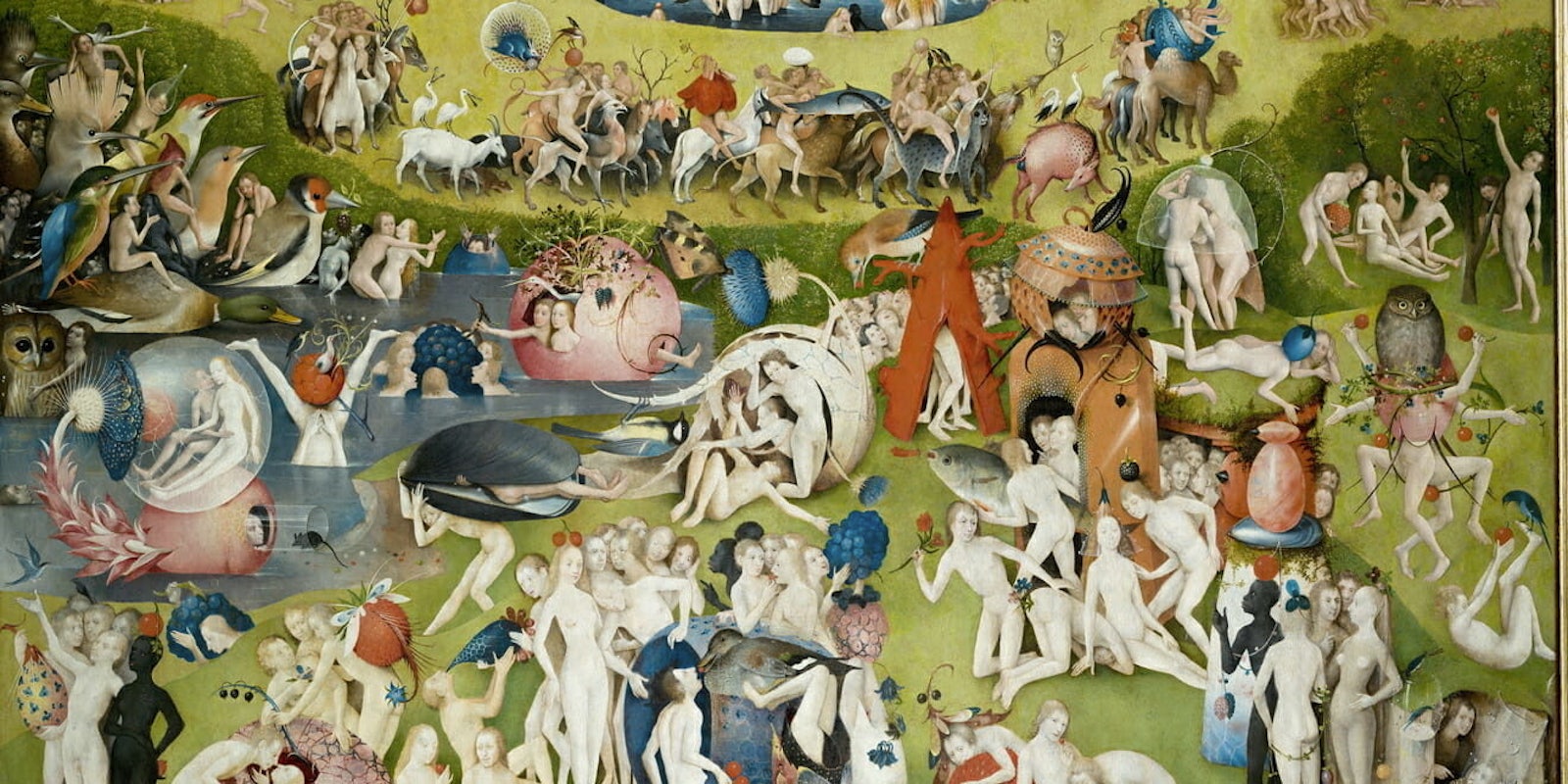The Garden of Earthly Delights has fascinated and befuddled scholars for centuries. Painted somewhere between 1490 and 1510 by Dutch artist Hieronymus Bosch, the painting is a triptych oil painting containing so many surreal characters and situations that Wired compared it to a Where’s Waldo drawing.

Little is known about Bosch and even less about his creation of the masterpiece, leaving art historians to debate his intentions and interpret the myriad of images contained in the painting however they see fit.
Now they’re getting a little help from Twitter. IT consultant Nig Thomas has created a Twitter bot that posts a random small section of the painting every few minutes, breaking Bosch’s overwhelming painting down into bite-sized surreal chunks. “The combination of comical and disturbing is pretty compelling but even given free rein to explore, you miss bits. It’s just too dense,” Thomas told Wired last month.
The bot wasn’t that hard to create. Thomas told Wired that it took him around 30 minutes to make it, and now we can see pieces of Bosch’s painting every day.
Here are some of the recent tweets from Bosch Bot:
— BoschBot (@boschbot) November 8, 2018
— BoschBot (@boschbot) November 9, 2018
— BoschBot (@boschbot) November 8, 2018
— BoschBot (@boschbot) November 8, 2018
— BoschBot (@boschbot) November 8, 2018
— BoschBot (@boschbot) November 8, 2018
— BoschBot (@boschbot) November 5, 2018
While scholars will continue to debate, Twitter seems to have no problem finding meaning in the painting’s images—or making memes.
“When the weekend hits,” one Twitter user captioned one of the Bosch images.
https://twitter.com/AntlionStudios/status/1059687400052535296
Another person turned a particularly creepy part of the painting into an object-labeling meme, identifying a giant rat-like creature as “the 24-hour news cycle” and a man trapped in a drum below the creature as “me.”
— HulloThere – not on a boat ☹️ (@jethroreading32) November 8, 2018
And people added humorous captions to several other images:
https://twitter.com/MysterMyke/status/1060528729124794368
Damnit Jenny, stop putting that Xtian fish symbol on the corkwood floors.
— 𝙴𝚖𝙱𝚎𝚎 (@embeeshea) November 8, 2018
https://twitter.com/JennWelchNow/status/1060764601179140096
https://twitter.com/Cpo10za/status/1059884301523804162
Bird One (with mouth full) :"Well, let's see, we have on the bags, Who's on first, What's on second, I Don't Know is on third…"
— Ted Sohns (@SohnsTed) November 6, 2018
Bird Two : "That's what I want to find out!"
Frog (muffled) :"Who's on First?!" pic.twitter.com/uKFOe4CS68
This isn’t Thomas’ first Twitter bot. He’s also behind the account @pubnames, which is great if you’re trying to name your bar and can’t come up with anything unique.
The Cafe Royale and Shock Therapy pic.twitter.com/a2ms1bT5z1
— Pub Names (@pubnames) November 9, 2018
And @SylviaPlathBot, which posts lines from Sylvia Plath’s poems.
It is like being mailed into space,
— Sylvia Plath Bot (@SylviaPlathBot) November 9, 2018
While people usually think of Twitter bots as annoying, accounts like Bosch Bot are encouraging people to examine a historical work of art. And it’s not the only art-themed bot that is gaining traction on Twitter this year.
Back in March, Robbie Barrat created an AI that was capable of creating surreal looking “nude” paintings. The first AI-created art recently sold for more than $400,000—apparently using some of Barrat’s code.
https://twitter.com/DrBeef_/status/978732422085988352
All this might seem a bit overwhelming to old-school art lovers, but it’s worth noting that the AI was programmed by a human and fed nude paintings made by other humans to create its results, while Thomas’ Twitter bot, as fascinating as it might be, is only taking snapshots of a manmade work. We’re not at the point where computers are creating art independently…yet.
READ MORE:
